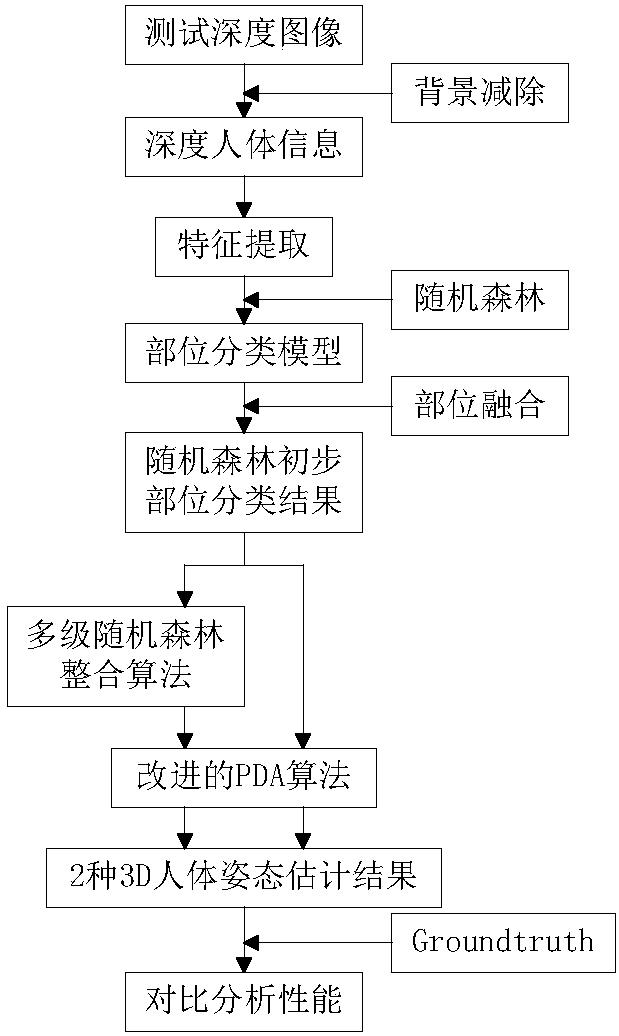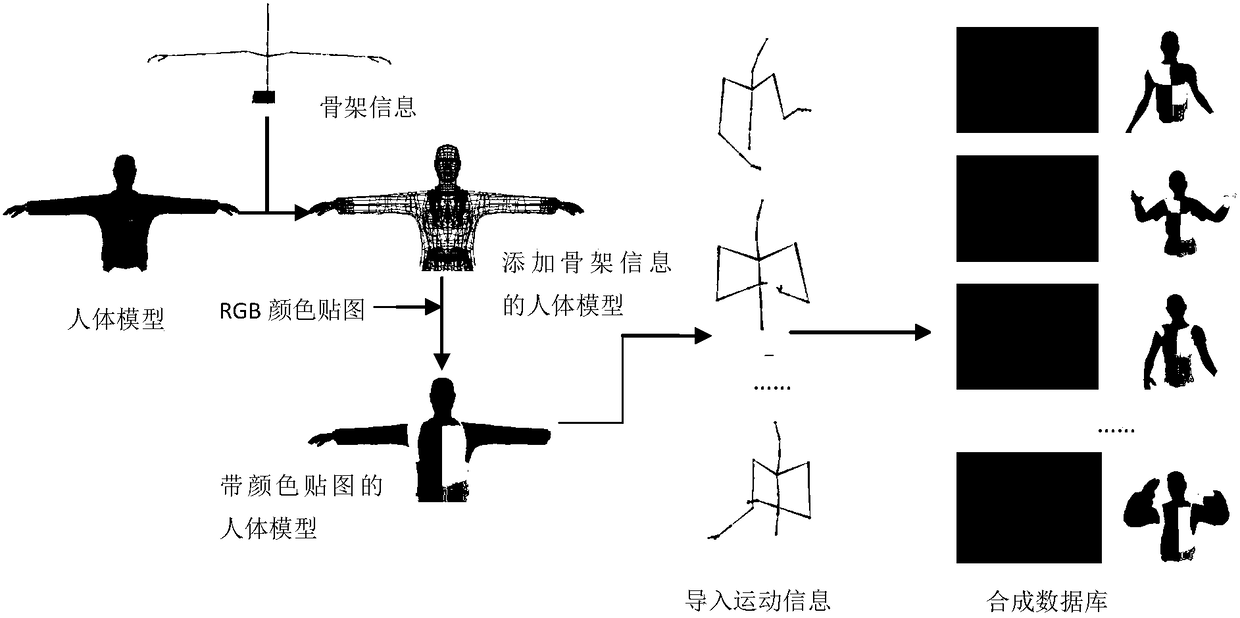3D body posture estimation algorithm for single depth image
A technology of depth image and human body posture, applied in the field of computer vision, can solve the problem of lack of labels and achieve the effect of improving the results of part classification and recognition
- Summary
- Abstract
- Description
- Claims
- Application Information
AI Technical Summary
Problems solved by technology
Method used
Image
Examples
Embodiment Construction
[0060] The present invention will be described in detail below with reference to the drawings and specific embodiments.
[0061] The technical block diagram of the present invention is shown in Figure 1. We first use the background subtraction method to remove the background of the depth image, and only retain the depth human body information. Then in the training phase, based on the part fusion, the larger parts are divided into smaller parts, and features are extracted, and then the part classification model is trained through random forest, as shown in Figure 1(a); in the testing phase, As shown in Figure 1(b), the image features of the test stage are first extracted, and then the body parts of the image are recognized through the part classification model, and the corresponding parts of the recognition are merged into large parts through the part fusion idea, so as to obtain the fused random forest Preliminary classification results, using the multi-level random forest integ...
PUM
 Login to View More
Login to View More Abstract
Description
Claims
Application Information
 Login to View More
Login to View More - R&D
- Intellectual Property
- Life Sciences
- Materials
- Tech Scout
- Unparalleled Data Quality
- Higher Quality Content
- 60% Fewer Hallucinations
Browse by: Latest US Patents, China's latest patents, Technical Efficacy Thesaurus, Application Domain, Technology Topic, Popular Technical Reports.
© 2025 PatSnap. All rights reserved.Legal|Privacy policy|Modern Slavery Act Transparency Statement|Sitemap|About US| Contact US: help@patsnap.com



